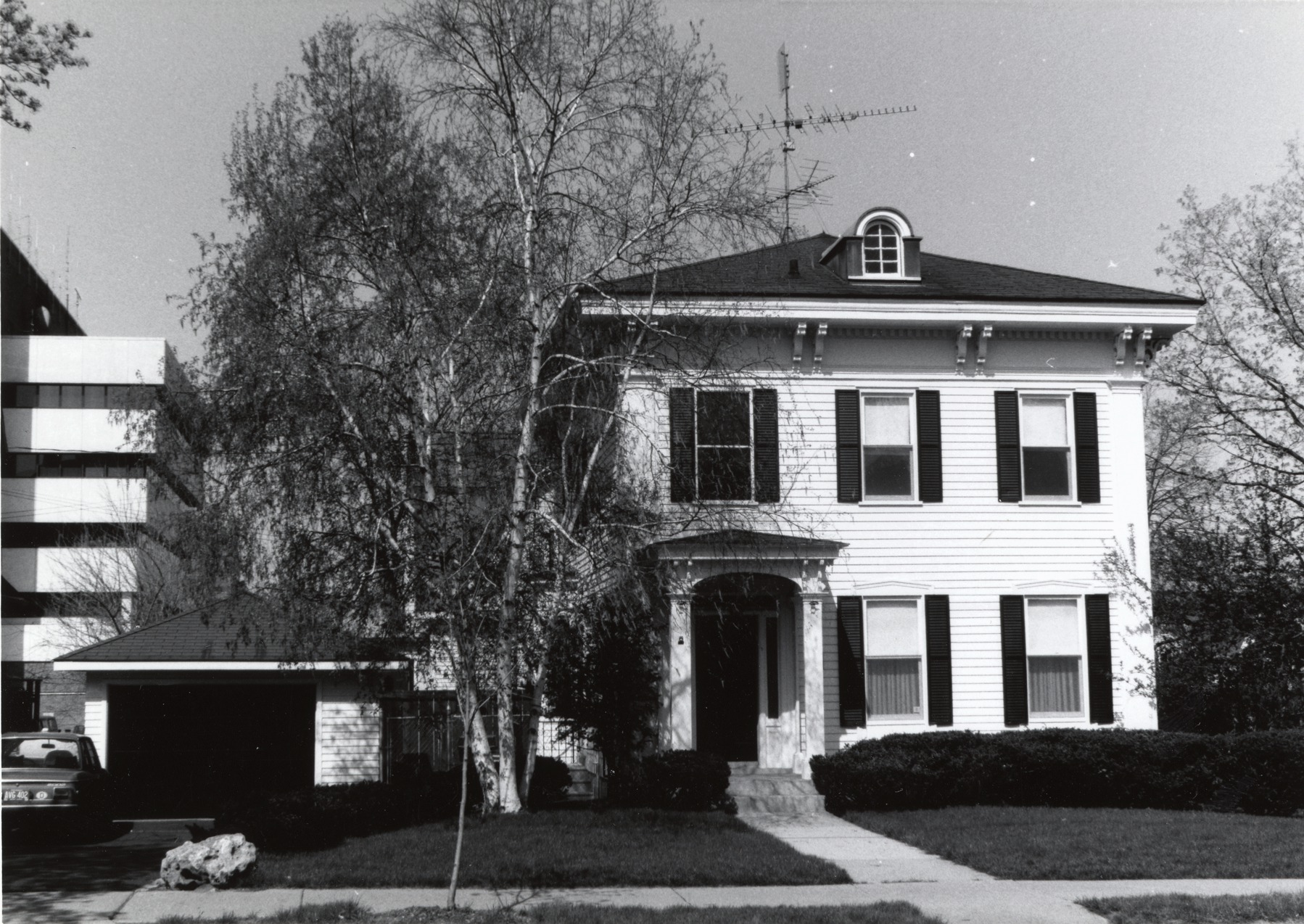Moses Rogers House, 1861

Year
1861
121 North Division Street
Moses Rogers House, 1861
This is one of the few nineteenth century homes in the Division Street Historic District that has been modernized and maintained as a single family home. Although originally surrounded by larger and more elegant homes, the simple lines of this Italianate house with its finely detailed brackets have long been admired. The original porch has been removed and a dormer added on the third floor, but the house has otherwise changed little in its outward appearance.
The house was built about 1861 for Moses and Letitia Sweetland Rogers and their daughters, Ellen and Katie. Moses and his more famous brother Randolph were sons of an Ann Arbor baker. Randolph left Ann Arbor to become world renowned as a sculptor; among his works are the bronze doors of the Capitol in Washington, D. C. A full-sized version of his popular genre statue "Nydia" (the blind heroine of Bulwer-Lytton's novel The Last Days of Pompeii) is in a collection of the University of Michigan Museum of Art, purchased for the University by the Randolph Rogers Art Association of Ann Arbor. Moses was also a talented artist but had little time to devote to his painting. He owned the Ann Arbor Agricultural Works, which grew from a downtown store to a sprawling factory on Broadway by the river, producing Advance sulke rakes, chilled plows, and hay tedders. Moses also held a number of local political offices and was a trustee of the First Unitarian Society of Ann Arbor.
Rogers' daughter Katie born in 1849, achieved considerable fame as an artist, particularly as a painter of portraits. Professor Gookins, her tutor at the Chicago Academy, was impressed by her work and wished to show one of her paintings at the great Centennial Exhibition in Philadelphia, a rare opportunity for any artist. Katie modestly declined. The 1881 History of Washtenaw County describes her portraiture as "lifelike and striking. Whether painting the soft dimple upon the cheek of an innocent babe, or the harder lines of the aged pioneer, there seems to be a reality about the work which makes one feel that he is in a living presence." When her father died in 1888, Katie forsook her home studio for seven years to run his farm machine business. She herself died in 1901. Some of her surviving paintings are in the possession of the Washtenaw County Historical Society.